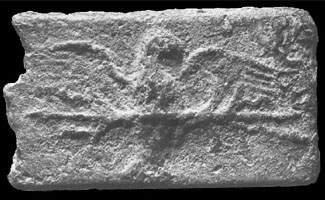
Coins were lately adopted in Rome compared to the rest of the Mediterranean, where the adoption of ancient coins in electrum (a natural alloy of silver and gold) in Lydia in Asia Minor toke place around the 600 BC, with a quick diffusion of the use of the coinage then in the near Greece.
Before the introduction of ancient coins in the populations of central Italy, the commerce was based on the barter, using as mean of exchange livestocks (pecus), from which derives the Latin word pecunia used to identify the money. The first alternative to the barter was the exchange of metal valued by weight; the availability of natural resources (mainly copper and tin, with the silver quite difficult to find) made common to use alloys in bronze by means of fused blocks with irregular form, different dimensions and without any distinctive marks to characterize them. From the Latin name of the "copper" or "bronze" (aes) comes the name of of aes rude ("raw bronze") of this form of pre-coin, name then also used for the first Roman coin: the as. From a technical point of view, the aes rude cannot be considered a coin since it misses a standard weight (and therefore a fixed value) and there is no mark to identify the value of the object and any information about the issuing authority that guarantees its characteristics.

The aes rude was the mean of exchange used for hundreds of years to a large extent of central Italy , even if it had drawback to be weighed for every exchange, as its value was linked to its weight, as for all the ancient coins, but in this case the weight was different for each one of these objects. This problem was addressed in republican era, introducing the aes signatum ("marked bronze"), ingots of metal of regular form (usually a rectangular one) even if with a variable weight, with marks to identify their characteristics or manufacturers.

Also the aes signatum cannot be considered as a coin, as it had no uniformity of weight and therefore of value.
As far as the timing of the introduction of the bronze as mean of exchange, there is no uniformity of opinions. In his "Naturalis historia", Plinius attributes the introduction of the aes signatum to Servius Tullius (578 BC - 535 BC), but many researchers shift this evolution at the IV century BC, during the Roman Republic (509 BC - 44 BC).